
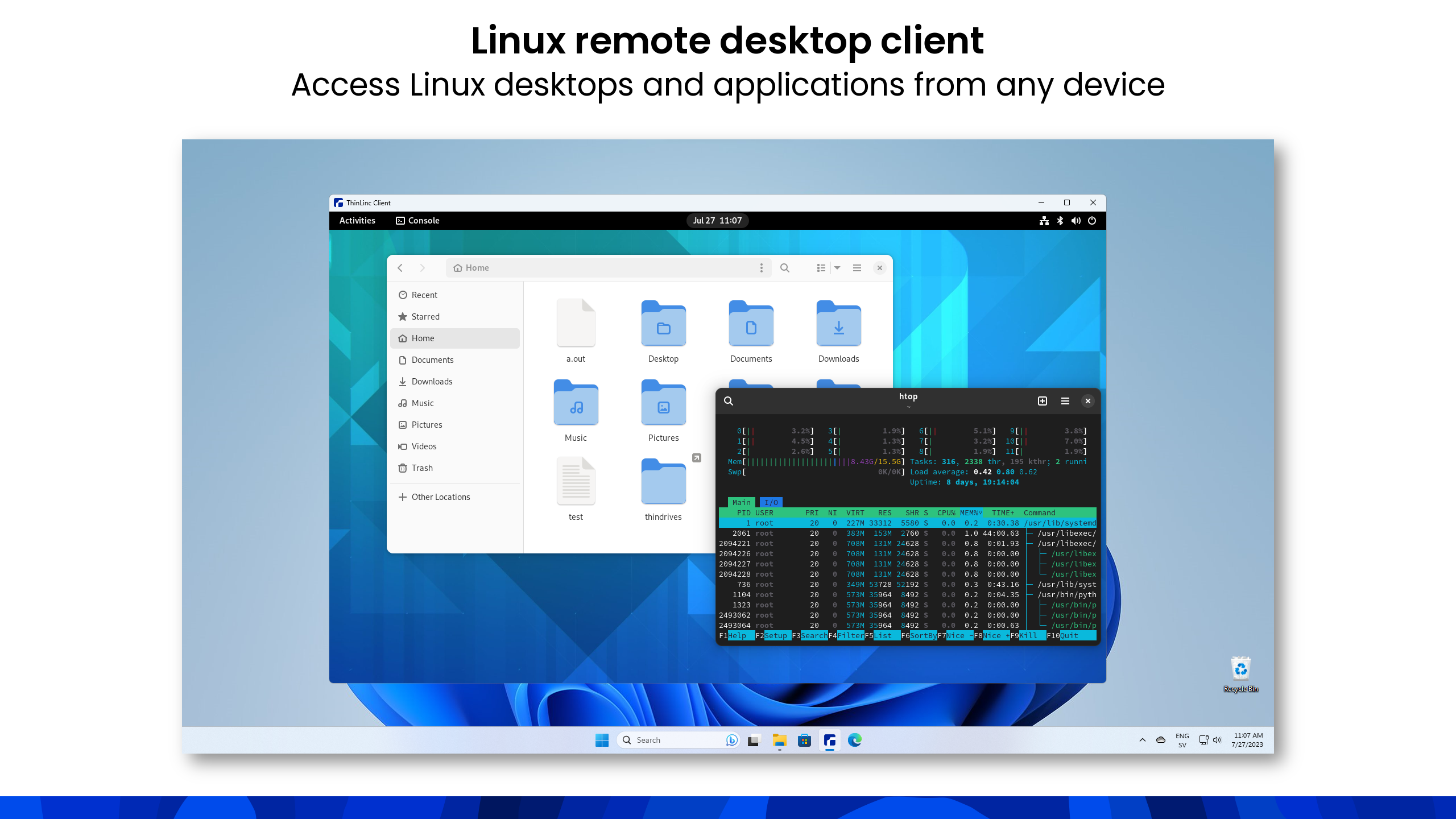
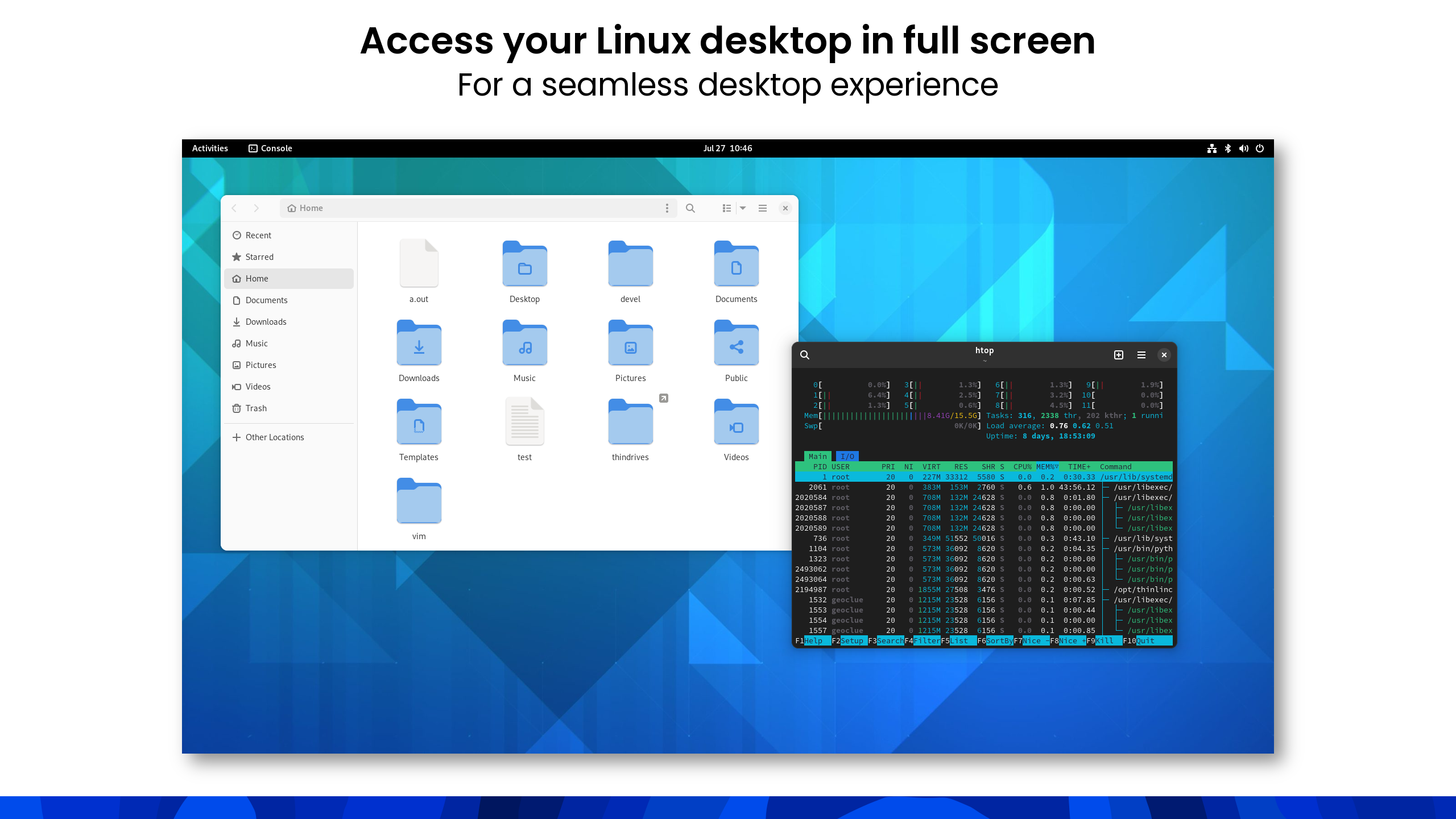
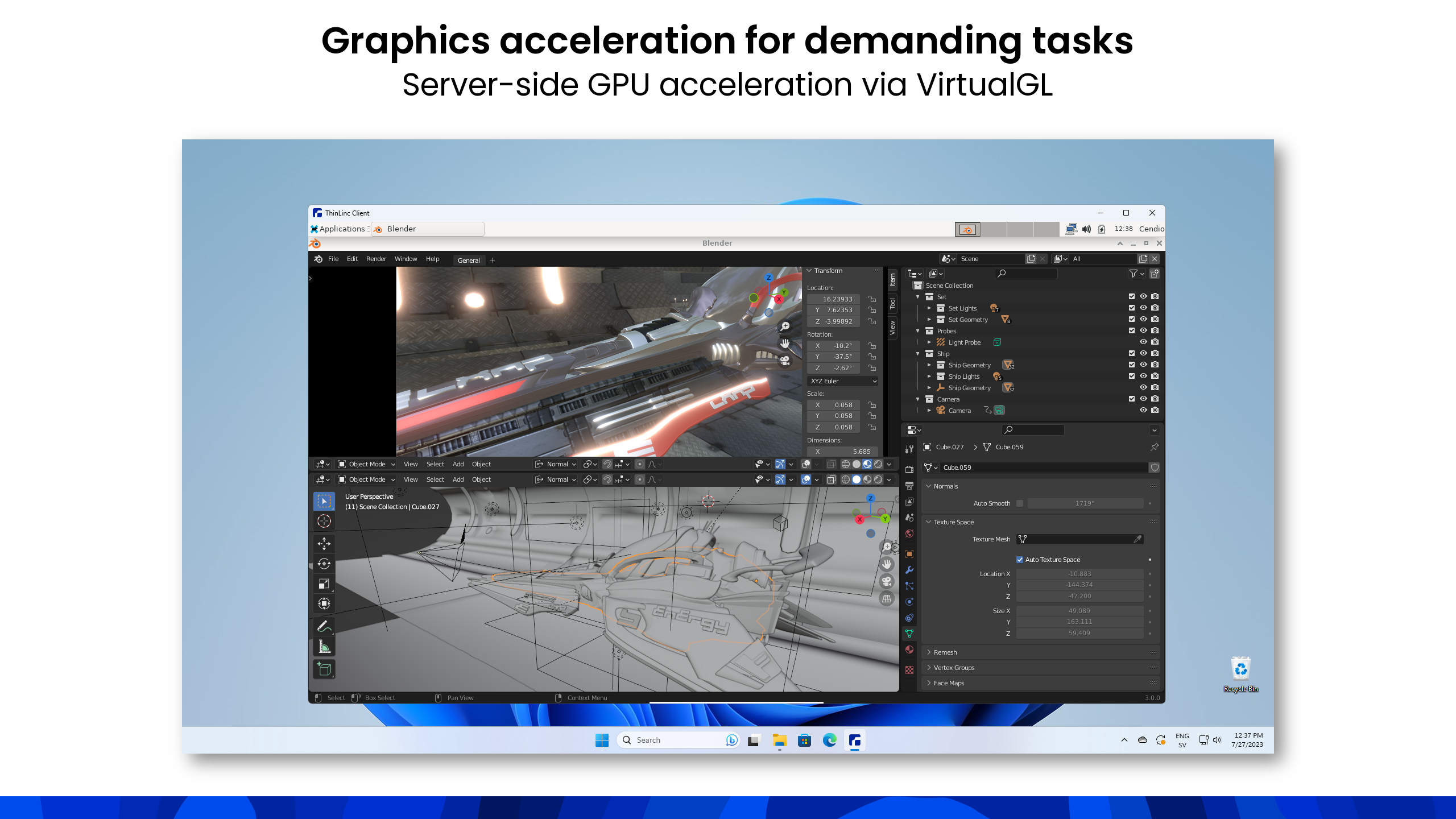
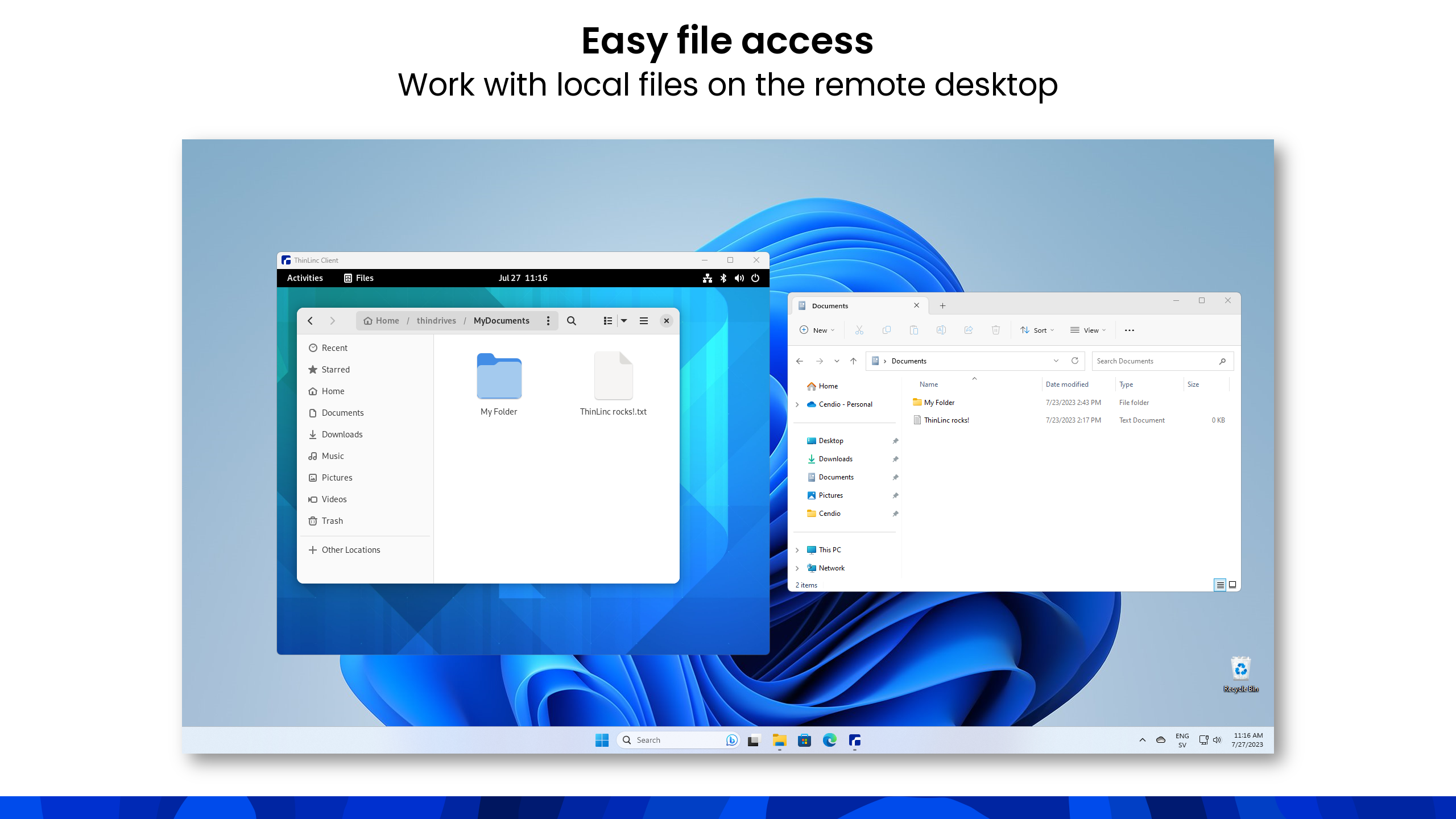
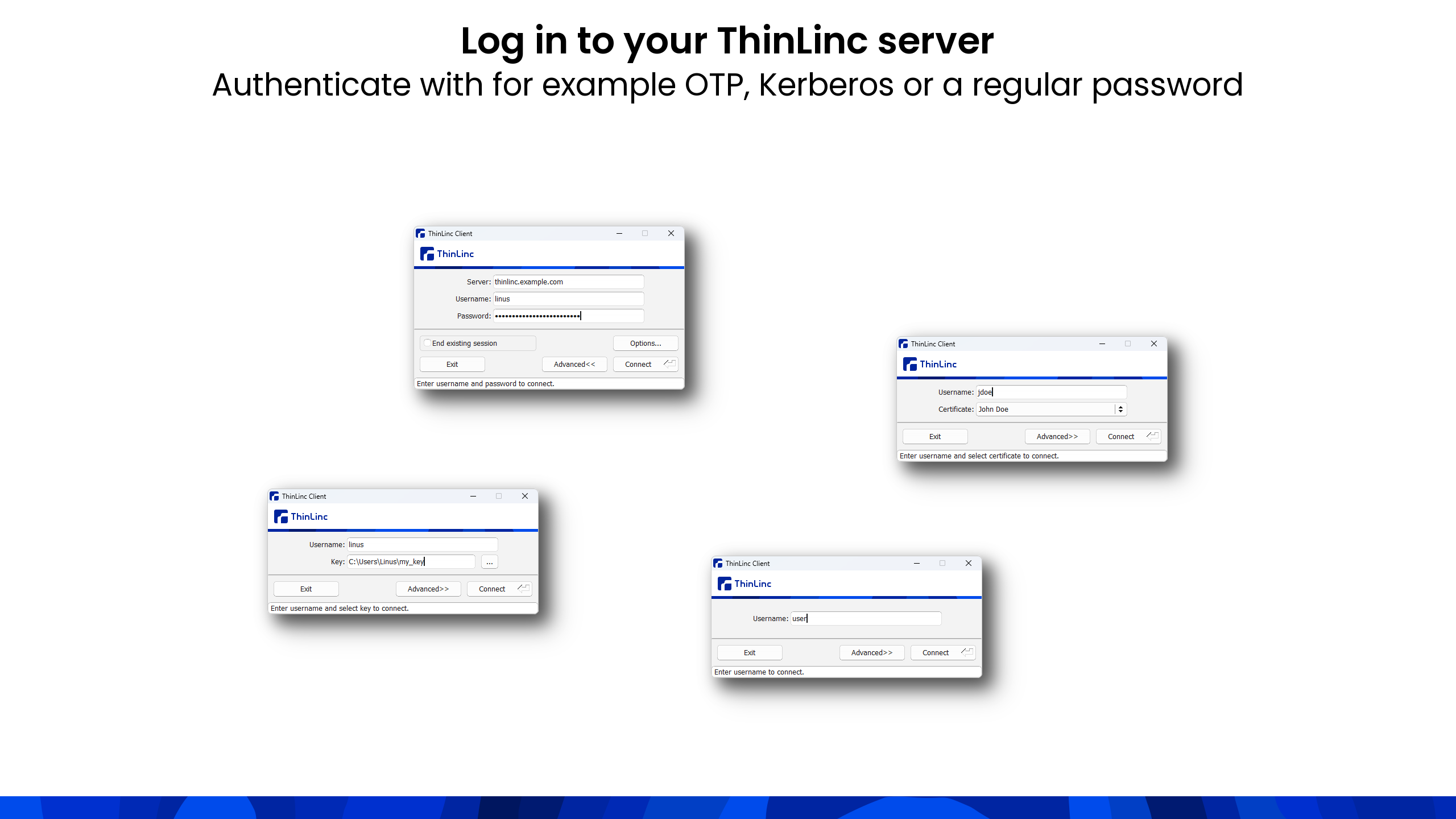
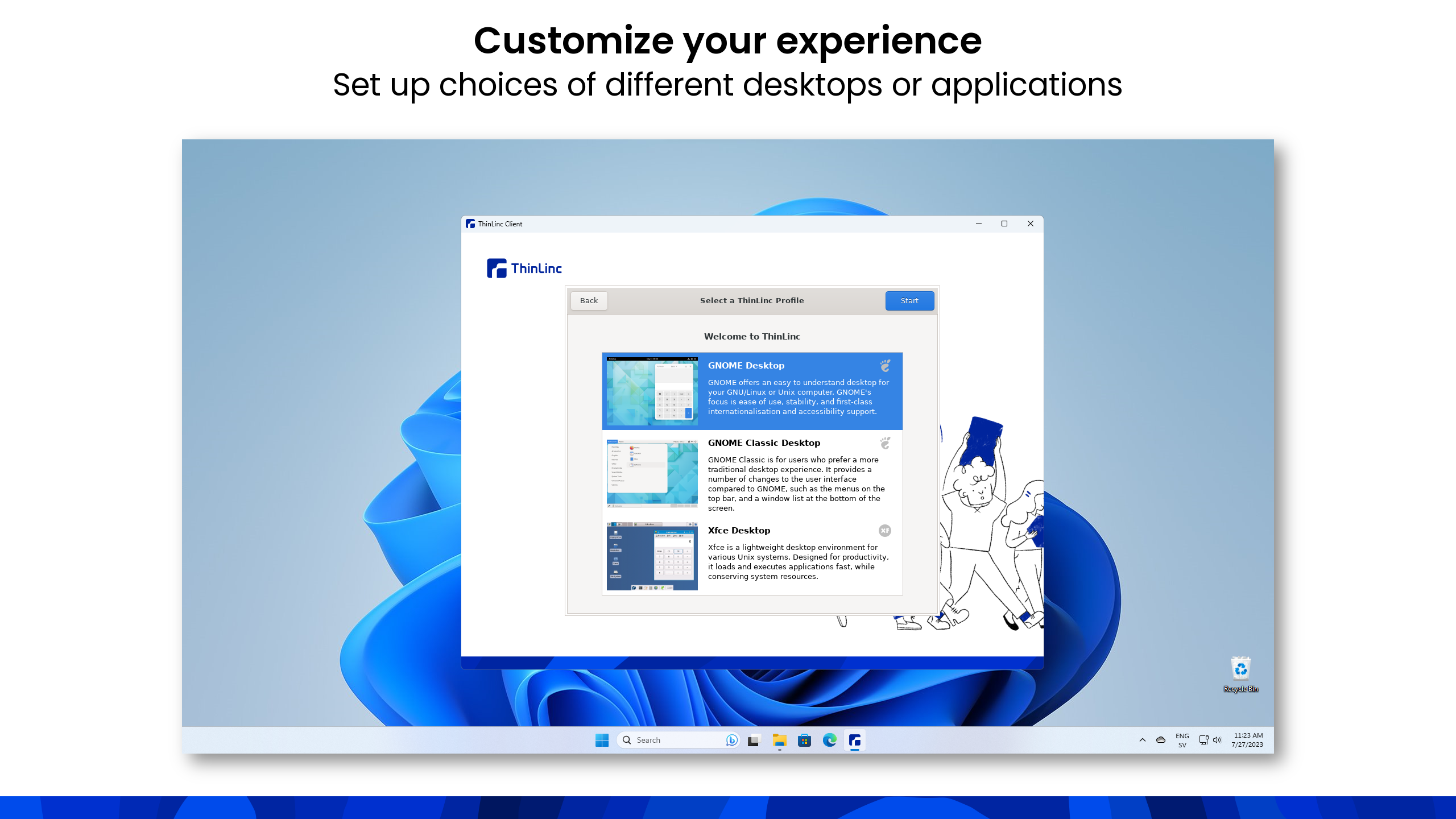
Description
The ThinLinc Client is a remote desktop client used to connect to a ThinLinc Server. With ThinLinc you are able to get access to Linux desktops and applications.
You can use the ThinLinc Client to connect to an existing ThinLinc Server. You can also set up your own ThinLinc Server. The ThinLinc Server can be downloaded for free from https://www.cendio.com for Linux machines. The ThinLinc Server is free to use for a limited amount of concurrent users per organization.
ThinLinc enables organizations to implement a Linux server-based computing (SBC) infrastructure. By centralizing computing resources in the data center rather than distributing them amongst end-users, IT systems become more efficient, secure, and accessible. End-users’ desktops and applications are published from a central location, providing a seamless and familiar environment regardless of which device the user is connecting from, or the user location. Redundancy, inherent in a server-based solution, increases the availability as well.
ThinLinc combines the tools and infrastructure required for Linux-based SBC into a mature, stable, and fully-supported package. The ThinLinc Client and the ThinLinc Server provide a complete solution together.
-
Multi-monitor support — full screen on all or a subset of screens in a multiple monitor setup are fully supported
-
Touch screen support — touch screens can be used to interact with the remote session
-
Clipboard synchronization — copy/paste clipboard is kept synchronized between the client machine and the remote
-
Local file access in session — files from the client machine can be accessed on the remote
-
Local sound redirection — sounds from the remote are redirected and played on the client machine
-
Local microphone redirection — audio input from the client machine is redirected to the remote
-
Local printer redirection — printers connected to the client machine can be accessed from the remote
-
Kerberos authentication — Kerberos can be used to achieve an intuitive single-sign-on behavior
-
One-time password authentication — two-factor authentication can be used
-
Password authentication — supports regular authentication with username and password
-
Public key authentication — SSH keys can be used to authenticate to the server
-
Smart Card authentication — smart cards can be used for authentication, but are also redirected into the remote session for use in remote apps
